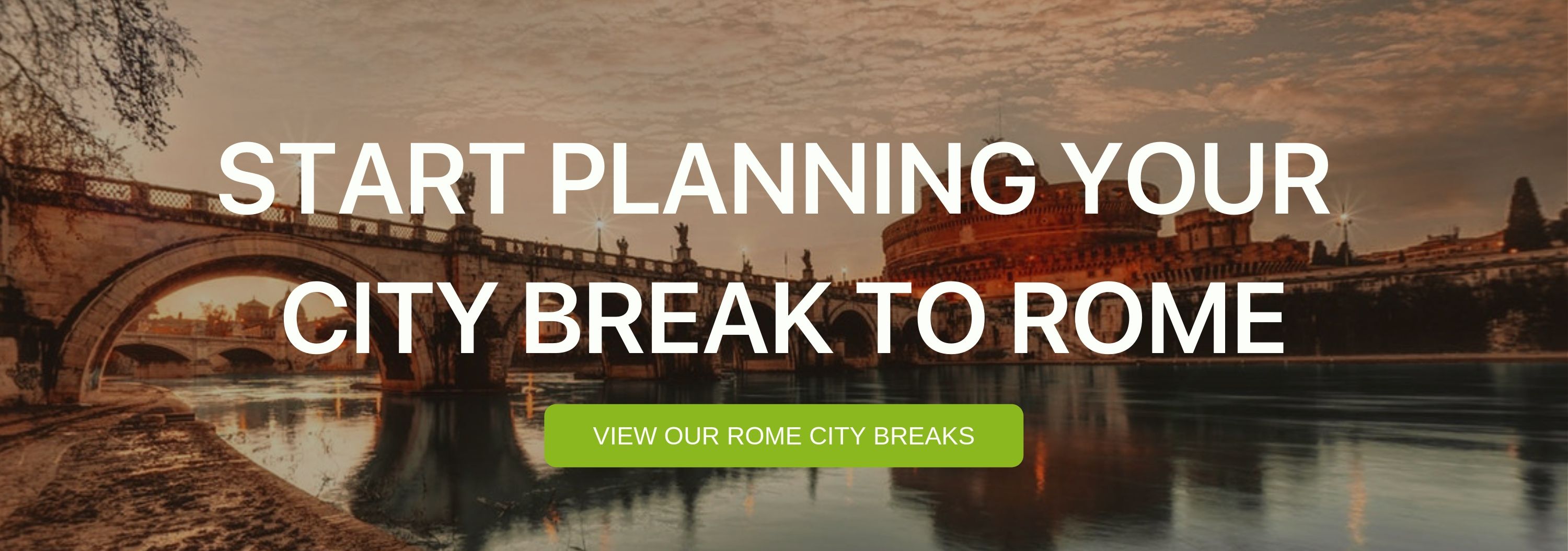Rome is a remarkably stunning city and is home to some of the world’s most notable and historically important buildings. From ancient ruins to Baroque churches, Rome has made its stamp on the world of architecture thanks to the visionary talents of architects like Michelangelo, Bramante, Borromini and Bernini.
Even holidaymakers who aren’t usually keen architecture buffs spend days wandering the city looking upwards at the beautiful domes and neoclassical towers. For anyone who doesn’t usually know the difference between their Renaissance and their Romanesque, we’ve compiled a quick guide to the history and architectural style behind some of Rome’s key buildings.
St. Peter’s Basilica
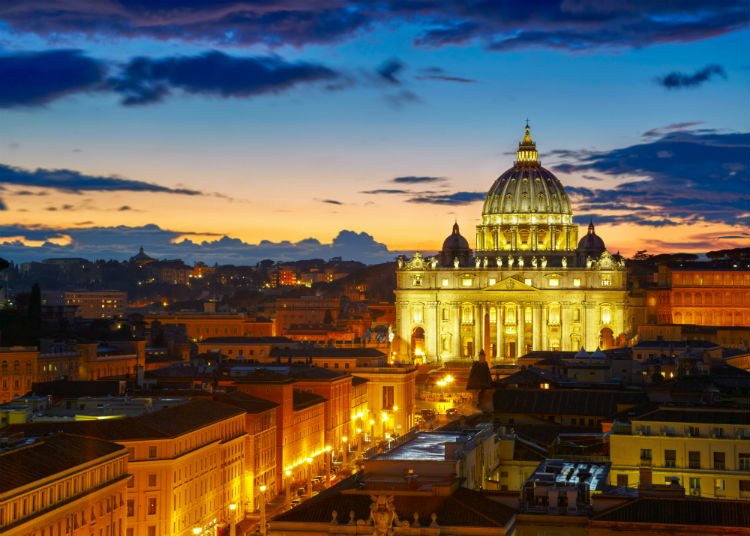
With a dome roof that dominates the skyline of Rome, the St Peter’s Basilica grabs your attention as soon as you enter the city. The very first foundation stone was laid in 1506, and the plan was to build the grandest building in Christendom – and to this day it remains the largest church in the world and is considered one of the holiest Catholic shrines.
Construction of the church took until 1626, but the original design print was by Donato Bramante and featured a floorplan that was the shape of a large Greek cross, with the first stone being laid in 1506. When Pope Julius died in 1513, the design changed hands to Giuliano da Sangallo, Fra Giocondo and Raphael who changed the Greek cross to a consortium of bays. After all three architects passed away, the project was passed to Baldassare Peruzzi who reverted back to the Greek Cross but kept elements of Raphael’s proposal (such as the internal arrangement of the three main apses). This plan did not go ahead because of difficulties between church and state, with Peruzzi passing in 1536. Antonio da Sangallo the Younger became the next architect, and his vision was a combination of all the former images with only a few eternal elaborations.
It was only on the 1st January 1547 that Michelangelo – who is considered the primary architect of the building – took over. He kept the original Greek cross layout but borrowed features of later plans such as the curved walls of Raphael’s drawings.
The church went on to have a great influence on the architectural style of churches in the western world. The domes of Karlskirche (Vienna), St. Nicholas Church (Prague), and the Pantheon (Paris) all pay homage to St Peter’s Basilica.
The Colosseum
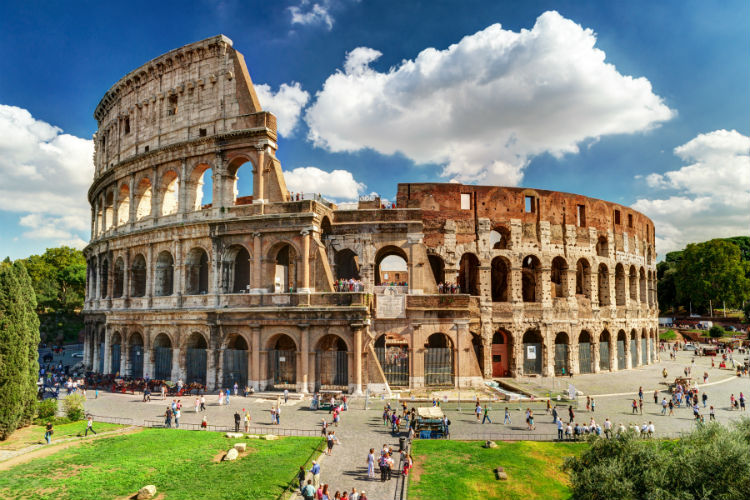
We can’t discuss important buildings in Rome without mentioning the iconic Colosseum. It is the most prominent example of ancient Roman architecture and is the largest amphitheatre ever built. The construction actually started way back in AD 72 under the eye of Emperor Vespasian – and completed in AD 80 under his heir and modifications were made during the reign of Domitian. This dynasty was known as the Flavian dynasty and is how the Colluseum earned it alternative name, the Flavian Amphitheatre.
The structure is built from concrete and sand, and could hold 50,000 and 80,000 spectators back in its day. It’s widely known that it was used for gladiator battles, but it was also used for mock sea battles, executions, and enactments of Classical Mythology.
Quirinal Palace
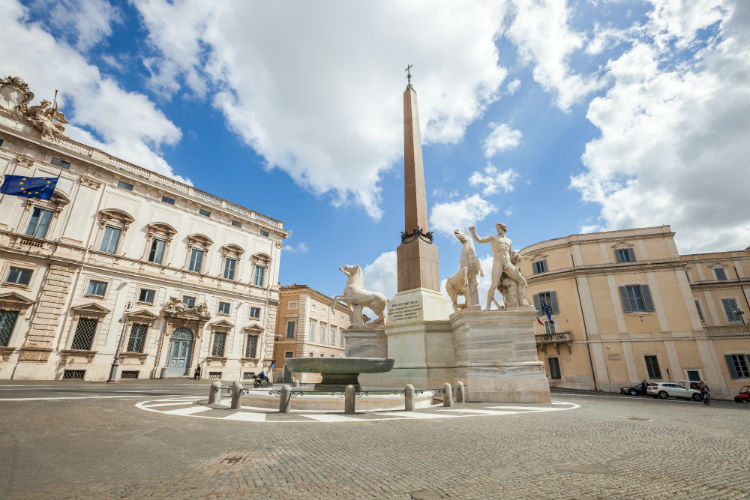
Rome is regarded as the second Renaissance capital of Italy – after Florence – with the Quirinal Palace as one of the prime examples. It’s currently one of the three official residences of the President of the Italian Republic, and has housed thirty Popes, four Kings of Italy and twelve presidents of the Italian Republic.
Originally built in 1583 by Pope Gregory XIII as a papal summer residence, and commissioned the architect Ottaviano Mascherino. The palace is built around an internal courtyard, and boasts 1,200 rooms that include Hall of the Cabinets, The Grand Ballroom, the Hall of Mirrors, and The Chapel of the Annunciation. Outside there is also the Quirinal Gardens that clocks in at 40,000 m² and is famous for its water organ (a new addition, built in the late 90s) that has a single keyboard of 41 notes.
Altare della Patria
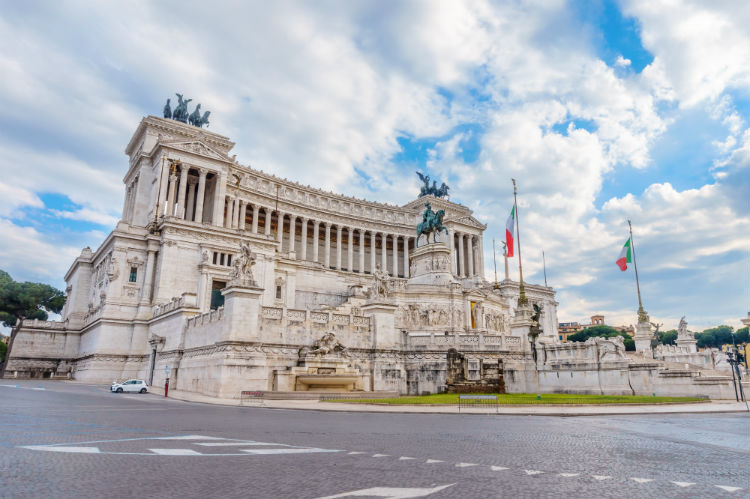
In 1870 neoclassical architecture came to Italy and Rome became the new capital city. During this time period, many new palaces were built to host ministries, embassies, and other governing agencies.
One of the most well-known symbols of Neoclassical architecture on Rome is Altare della Patria (also known as the Monumento Nazionale a Vittorio Emanuele II). It was designed by Giuseppe Sacconi in 1885, inaugurated in 1911 and completed in 1925. Inside the building, visitors will find stairways, Corinthian columns, fountains, an equestrian sculpture of Victor Emmanuel and two statues of the goddess Victoria riding on quadrigas.
EUR District
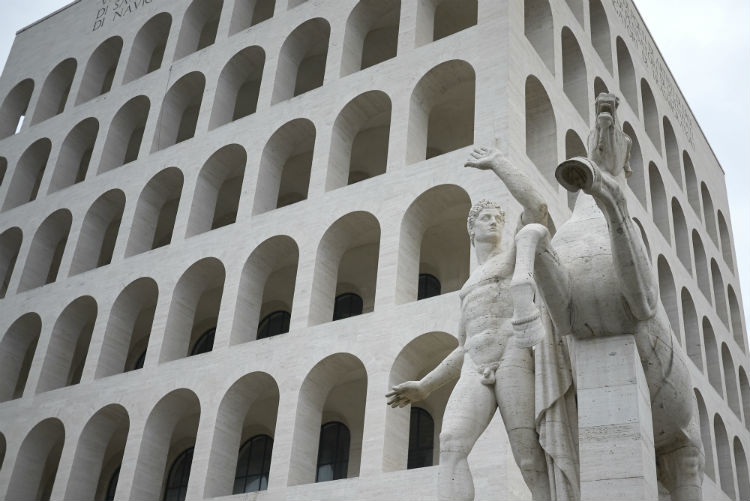
It isn’t a pleasant part of Rome’s history, but the EUR business district is home to many examples of fascist architecture and illustrates how different Rome could look if fascism hadn’t fallen. The buildings were originally constructed for the 1942 world’s fair that Benito Mussolini planned to celebrate twenty years of Fascism. But after World War 2, the exhibition plans were scrapped despite buildings having been erected.
The Palazzo della Civiltà Italiana is the most recognisable structure and was designed by Giovanni Guerrini, Ernesto Lapadula and Mario Romano. While much of the other buildings are a simplified Neoclassical style of architecture, this building also has elements of Metaphysical art.
Other notable buildings in this district are Palazzo dei Congressi, Archivio Centrale dello Stato and Basilica parrocchiale dei Santi Pietro e Paolo.
If you’ve been to Rome – what building caught your eye?
